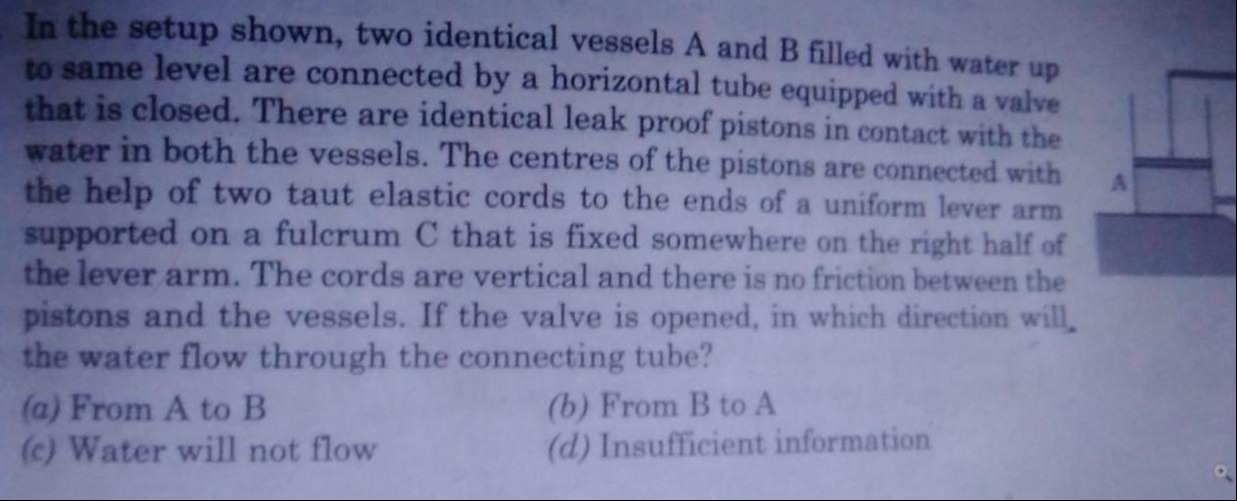Question
Question: In the setup shown, two identical vessels A and B filled with water up to same level are connected b...
In the setup shown, two identical vessels A and B filled with water up to same level are connected by a horizontal tube equipped with a valve that is closed. There are identical leak proof pistons in contact with the water in both the vessels. The centres of the pistons are connected with the help of two taut elastic cords to the ends of a uniform lever arm supported on a fulcrum C that is fixed somewhere on the right half of the lever arm. The cords are vertical and there is no friction between the pistons and the vessels. If the valve is opened, in which direction will the water flow through the connecting tube?

From A to B
From B to A
Water will not flow
Insufficient information
From B to A
Solution
The initial direction of water flow is determined by the pressure difference between the two vessels at the level of the connecting tube. Since the initial water levels are the same, the pressure difference is due to the difference in pressure exerted by the pistons on the water surface. Let PA and PB be the pressures exerted by the pistons in vessels A and B, respectively. Water flows from B to A if PB>PA, and from A to B if PA>PB. The pressures are proportional to the forces exerted by the pistons, which are equal to the tensions TA and TB in the elastic cords. The tensions are determined by the rotational equilibrium of the lever arm. The lever arm is supported by a fulcrum on its right half. Considering the torques about the fulcrum, the tension in the cord connected to the end further from the fulcrum is generally smaller than the tension in the cord connected to the end closer to the fulcrum, to maintain equilibrium. Since the fulcrum is on the right half, it is closer to the right end (connected to piston B) than to the left end (connected to piston A) (unless it is at the center). If the fulcrum is closer to the right end, then TB>TA for equilibrium. Thus, PB>PA, and water flows from B to A. If the fulcrum is exactly at the center, then TA=TB, and there is no flow. However, given the options, a specific direction is expected. The visual representation in the figure suggests the fulcrum is strictly on the right half, implying flow from B to A.
